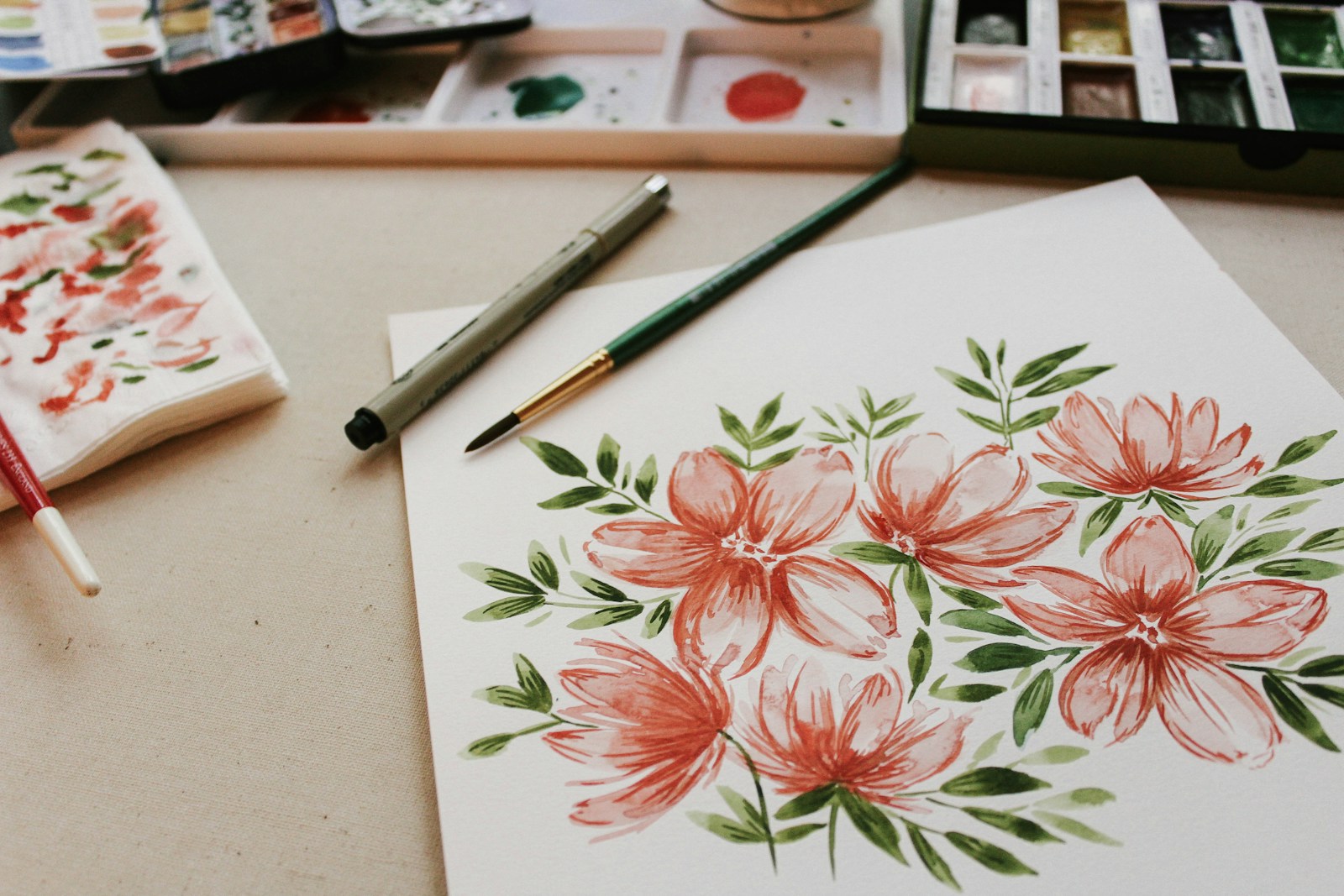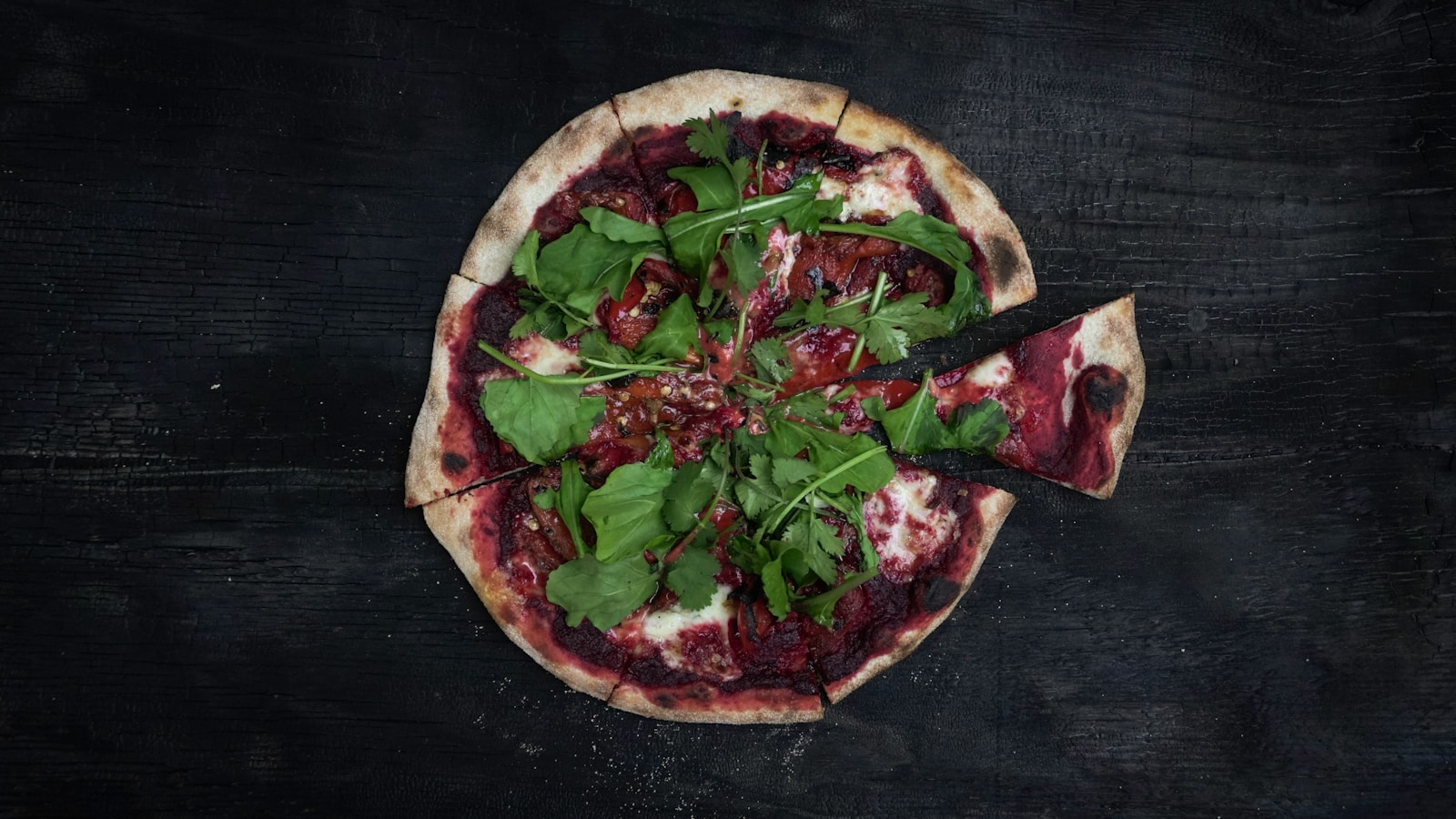The modern world generates an astounding amount of waste, with households and industries alike contributing to overflowing landfills. Consider the sheer volume of packaging discarded daily, the clothes that are outgrown or fall out of fashion, and the multitude of single-use items that quickly become yesterday’s trash. This ever-increasing tide of waste presents a significant challenge to environmental sustainability. However, within this challenge lies an exciting opportunity: the chance to transform discarded materials into something new and valuable through the art of DIY crafts. Engaging in creative projects using recycled items offers a tangible way to address the waste issue while simultaneously unlocking personal creativity. It’s a process that not only yields unique and often beautiful creations but also fosters a deeper connection to the resources we consume and discard. Ever look at an empty bottle or a pile of old magazines and think, “There has to be more to life than the recycling bin?” Well, the world of DIY recycled crafts resoundingly answers, “Absolutely!”
Table of Contents
ToggleWhy Embrace the World of DIY Recycled Crafts?
Opting for recycled materials in crafting endeavors is more than just a creative pursuit; it represents a conscious decision to actively participate in creating a healthier planet. This choice carries a significant positive impact, extending far beyond the personal satisfaction of making something with one’s own hands.
Reducing Landfill Waste: Turning Trash into Treasure
Landfills across the globe are rapidly filling with discarded items, becoming significant sources of environmental concern. These sites not only occupy valuable land but also contribute to various forms of pollution. As organic materials decompose in landfills, they release methane, a potent greenhouse gas that contributes significantly to climate change . Crafting with recycled materials directly intercepts the flow of waste to these already burdened sites . The sheer scale of waste generation is immense; for instance, millions of tons of textile waste are sent to landfills annually . By choosing to transform old clothing into new creations, such as cozy quilts or trendy bags, individuals can directly contribute to a reduction in the volume of waste destined for landfills. For example, worn-out t-shirts can be repurposed into cleaning rags, extending their useful life and reducing the need for disposable paper towels . This simple act of repurposing illustrates how even small crafting efforts can collectively lead to a substantial decrease in landfill waste.
Conserving Precious Natural Resources: Giving Our Planet a Break
The creation of new products typically necessitates the extraction of raw materials from the Earth, including timber from forests, minerals from mines, and water from various sources . These extraction processes can lead to significant environmental consequences, including habitat destruction, water pollution, and depletion of finite resources. Furthermore, the transportation and processing of these virgin materials are often energy-intensive . In contrast, utilizing recycled materials for crafts significantly reduces the demand for these environmentally damaging activities . Recycling aluminum, for example, requires a remarkable 95% less energy than producing aluminum from its raw ore . Similarly, recycling steel consumes only a fraction of the energy needed for primary steel production . By choosing to craft with recycled aluminum cans or repurpose old metal items, individuals actively participate in conserving energy and preserving natural resources. The energy saved by recycling just ten plastic bottles is enough to power a laptop for over 25 hours, highlighting the tangible impact of choosing recycled over new .
Lowering Your Carbon Footprint: Crafting a Greener Tomorrow
The production, transportation, and disposal of goods all contribute to the emission of greenhouse gases, which are the primary drivers of climate change . Creating new products from raw materials typically has a considerably higher carbon footprint compared to using recycled inputs . When materials are recycled and repurposed into crafts, the need for energy-intensive extraction and manufacturing processes is reduced, leading to a decrease in overall greenhouse gas emissions . In 2018 alone, the recycling and composting of municipal solid waste in the United States saved over 193 million metric tons of carbon dioxide equivalent . This demonstrates the significant potential of waste diversion, including through crafting, to mitigate climate change. Embracing a zero-waste lifestyle, which prioritizes reducing, reusing, and recycling, is a powerful approach to minimizing one’s environmental impact . Upcycling, a specific form of recycling that involves transforming waste materials into something of higher value or quality, further amplifies these environmental benefits by extending the lifespan and utility of discarded items . This process not only keeps materials out of landfills but also reduces the need for new production, thereby minimizing energy consumption and carbon emissions .
Unleashing Creativity: A Spectrum of Recycled Materials
The realm of recycled crafts is incredibly diverse, offering a vast array of materials that can be given a new lease on life. This section explores some of the most common and inspiring recycled materials suitable for crafting.
Paper’s Second Act: From Waste to Wonder
Paper is an exceptionally versatile and readily available recycled material. From the daily newspaper and glossy magazines to sturdy cardboard boxes and unwanted junk mail, paper waste is abundant in most households . Its inherent properties make it ideal for a multitude of crafting techniques, including folding, cutting, gluing, and layering. The sheer variety of paper-based recycled craft ideas underscores its adaptability and appeal to crafters of all levels .
Crafting Ideas with Recycled Paper
Beginners can explore the simple elegance of paper flowers crafted from the pages of old books, adding a vintage touch to décor . Colorful paper chains made from strips of magazines can add a festive touch to any occasion . Practical and easy bookmarks can be fashioned from discarded cereal boxes, offering a personalized touch to reading . For those seeking a slightly more involved project, the art of papier-mâché allows for the creation of unique decorative bowls, whimsical sculptures, or custom-designed plant pots using paper scraps and glue . Coiled magazine paper bowls offer a stylish and functional way to repurpose glossy magazines, transforming them into eye-catching storage solutions . For the more advanced crafter, the process of making one’s own recycled paper from various paper wastes opens up a world of possibilities for creating personalized stationery, unique greeting cards, or textured artwork .
Plastic’s Potential: Giving Bottles and More a New Purpose
Plastic waste represents a significant environmental challenge globally, with vast quantities accumulating in landfills and polluting natural environments. However, the durability and moldability of plastic also make it a fantastic resource for creative repurposing . From discarded water bottles and milk jugs to plastic containers and bottle caps, these ubiquitous items can be transformed into a wide array of useful and decorative crafts .
Creative Projects Using Recycled Plastic
Beginners can easily transform plastic bottles into vibrant planters for small plants, adding a touch of green to indoor or outdoor spaces . Simple bird feeders crafted from plastic bottles offer a rewarding way to support local wildlife . Even humble bottle caps can be used to create colorful mosaic art, adding a playful and eco-friendly touch to coasters or wall decorations . For those seeking a bit more complexity, intermediate crafters might enjoy creating whimsical wind spinners from cut plastic bottles, adding movement and color to gardens or patios . Learning to weave strips of plastic bags into surprisingly sturdy and reusable tote bags or even durable pot holders offers a practical way to reduce plastic bag waste . More advanced projects could involve melting and reshaping plastic to create unique jewelry pieces or constructing miniature dollhouses from recycled milk jugs, showcasing the versatility of plastic as a crafting medium .
Glass with a Past: Transforming Used Glass into Art
Empty glass jars and bottles, often relegated to the recycling bin, possess a unique beauty and potential for transformation in the world of recycled crafts . Their inherent clarity and ability to hold various forms make them ideal for both decorative and functional repurposing. From elegant vases to charming lanterns, recycled glass can add a touch of sophistication and sustainability to any home.
DIY Ideas for Recycled Glass
Beginners can easily transform empty wine bottles into stylish vases for fresh flowers or create enchanting lanterns by inserting fairy lights or small candles into clean jars . Even simple glass baby food jars can be repurposed into adorable and practical organizers for small items in the bathroom or craft room . For crafters with a bit more experience, creating glass mosaic coasters using broken pieces of colored glass offers a beautiful and functional way to upcycle . Experimenting with glass paints to add personalized designs to bottles and jars allows for the creation of unique decorative pieces or customized gifts . More advanced projects might involve learning the techniques to safely cut glass bottles to create unique drinking glasses, artistic sculptures, or even the components for a DIY chandelier .
Fabric’s Fresh Start: Breathing New Life into Old Textiles
The textile industry has a significant environmental footprint, and the disposal of old clothing and fabric scraps contributes substantially to landfill waste. However, these discarded textiles hold immense potential for creative reuse, offering a soft, adaptable, and colorful palette for crafting . From worn-out t-shirts and old towels to fabric remnants from sewing projects, these materials can be transformed into a wide array of useful and decorative items.
Fun Crafts with Recycled Fabric
Beginners can start with simple no-sew projects, such as making reusable makeup wipes from soft old towels or t-shirt scraps, reducing the need for disposable cotton pads . Creating fun and fashionable knotted headbands from colorful fabric remnants is another easy way to begin . Even turning old t-shirts into fabric yarn, which can then be used for knitting or crocheting projects like coasters or small bags, is a great entry point into fabric upcycling . For those with some sewing experience, intermediate projects like creating cozy patchwork quilts from squares of fabric scraps offer a rewarding way to preserve memories and reduce textile waste . Upcycling old jeans into durable and trendy tote bags provides a practical and stylish way to give denim a second life . More advanced crafters can explore intricate textile art, create unique upcycled clothing by adding embellishments to existing garments, or even transform old sweaters into soft and inviting pillow covers, adding a touch of warmth and sustainability to home décor .
Crafting for Everyone: DIY Projects for All Skill Levels
The beauty of recycled crafts lies in its accessibility. Regardless of one’s crafting experience, there are numerous projects that can be enjoyed, fostering creativity and promoting sustainability.
Getting Your Feet Wet: Beginner-Friendly Recycled Crafts
For those just starting their crafting journey, recycled materials offer a forgiving and inexpensive way to experiment. Simple projects that require minimal tools and basic techniques are ideal for building confidence. Creating adorable bottle cap fish by painting plastic bottle caps in bright colors and gluing them together to form whimsical underwater scenes is a fun and easy activity . Another classic beginner project is the toilet roll bird feeder, where a simple cardboard tube is coated in peanut butter and rolled in birdseed to create a treat for feathered friends . Turning old CDs into sparkling spring birds by adding feathers, beaks cut from paper, and googly eyes is a delightful way to repurpose outdated media . Even transforming empty egg cartons into colorful dragonflies using paint and pipe cleaner antennae is a simple yet engaging craft . The sheer number of straightforward, often kid-friendly, projects available makes recycled crafting an accessible and enjoyable activity for individuals and families alike, fostering an early appreciation for sustainability.
Taking it Up a Notch: Intermediate Recycled Craft Adventures
As crafters gain more experience and confidence, they can explore projects that involve slightly more complex techniques or the combination of different recycled materials. Creating CD mosaic art by cutting old CDs into small pieces and arranging them to form intricate designs on picture frames or coasters adds a touch of shimmering beauty to upcycled items . Transforming old tin cans into charming lanterns by carefully punching holes into their sides to create patterns and then painting them can result in beautiful and atmospheric lighting for indoor or outdoor spaces . Rolling old magazines into tight coils and then gluing them together to create stylish and surprisingly sturdy coasters or even small bowls offers a unique way to repurpose paper waste . Even transforming plastic bottles into self-watering planters, which involves a bit more planning and assembly, provides a functional and eco-friendly solution for growing plants . These intermediate projects often focus on transforming everyday discarded items into more functional or aesthetically pleasing pieces for the home or garden , catering to those with some crafting skills who seek to create more substantial items from recycled resources.
The Master Crafter: Advanced and Unique Recycled Creations
For seasoned crafters seeking more intricate and innovative challenges, recycled materials offer a surprisingly rich palette for advanced projects. Imagine the artistic possibilities of creating stunning upcycled metal sculptures from carefully sourced scrap metal pieces, transforming industrial waste into unique works of art . Building an entire set of furniture from recycled wooden pallets requires significant skill and effort but results in truly unique and sustainable pieces for the home or garden . Even more ambitious ideas, such as constructing a functional garden greenhouse from numerous plastic bottles or creating a unique and textured wallpaper from old newspapers, showcase the remarkable potential for high-level creativity and resourcefulness with recycled materials . These advanced projects demonstrate that recycled materials are not limited to simple crafts but can be utilized for large-scale and impactful creations, blurring the lines between traditional crafting and artistic expression or functional design .
Sparking Your Imagination: Inspiring Examples of Recycled Crafts
To further ignite the creative spirit, here are some additional inspiring examples of crafts that can be made using recycled materials: transforming old cookie tins into decorative storage containers, crafting a whimsical mobile from colorful plastic bottle caps, sewing a reusable shopping bag from an old pillowcase, making a unique piece of wall art from reclaimed wood scraps, turning old light bulbs into miniature terrariums, crafting a decorative wreath from dried citrus peels, building a small organizer for a desk from recycled cardboard tubes, creating personalized gift tags from old maps or wrapping paper, making colorful beads from rolled-up strips of magazines, and turning an old ladder into a unique shelving unit .
Let’s Talk Crafty: Keeping it Conversational and Engaging
To truly connect with readers, adopting a conversational and engaging writing style is key . This involves using personal pronouns like “you,” “I,” and “we” to establish a more direct and friendly tone . Incorporating rhetorical questions can prompt readers to think and actively engage with the content . Employing analogies and metaphors can make abstract concepts more relatable and create vivid imagery in the reader’s mind . It is also important to use simple, everyday language, avoiding overly technical jargon that might alienate readers . Finally, keeping paragraphs concise and easy to read helps maintain the reader’s attention and prevents the content from feeling overwhelming .
Conclusion: Join the Upcycling Revolution!
The world of DIY recycled crafts offers a unique and fulfilling way to combine creative expression with environmental responsibility. By embracing the potential of discarded materials, individuals can actively contribute to reducing waste, conserving precious natural resources, and lowering their carbon footprint. Whether one is a seasoned crafter or just beginning to explore their creative side, there is a vast array of projects suitable for all skill levels and interests. From the simplest paper flower to the most intricate piece of upcycled furniture, the possibilities are truly limitless. By choosing to transform today’s trash into tomorrow’s treasures, everyone can participate in crafting a more sustainable and beautiful world, one recycled project at a time.
Frequently Asked Questions (FAQs)
Here are some common questions people ask about DIY crafts with recycled materials:
- Is crafting with recycled materials really better for the environment than just recycling? While traditional recycling is crucial, crafting with recycled materials, especially through upcycling, often has a greater positive impact. Upcycling gives the material a new purpose, potentially of higher value, extending its lifespan and reducing the need for new production. This can save more energy and resources compared to the standard recycling process, which might involve breaking down the material and creating something entirely new .
- Where can I find recycled materials for my crafts? The most readily available source is often your own home! Look through your recycling bin for paper, plastic bottles, glass jars, and cardboard. Old clothing, towels, and fabric scraps from sewing projects are also excellent resources. Additionally, consider asking friends and family to save their recyclables for you. Thrift stores and local recycling centers can sometimes be good sources for specific materials as well .
- Are there any safety precautions I should take when working with recycled materials? Yes, safety should always be a priority. When working with glass, it’s essential to handle it carefully to avoid cuts. If cutting glass is involved, wear appropriate safety glasses and gloves. Similarly, when working with metal, be mindful of sharp edges and consider wearing gloves. For projects involving melting plastic, ensure proper ventilation as some plastics can release harmful fumes when heated. Always supervise children closely when they are crafting with recycled materials .
- I’m not very creative. Where can I find inspiration for recycled craft projects? The internet is a treasure trove of ideas! Websites like Pinterest, blogs dedicated to crafting and sustainability, and YouTube channels offer countless tutorials and inspiration for recycled crafts. Start by searching for crafts using specific materials you have on hand, like “toilet paper roll crafts” or “recycled plastic bottle ideas.” Don’t be afraid to adapt ideas and put your own spin on them. The “Sparking Your Imagination” section of this article also provides a list of ideas to get you started .
- Can recycled crafts be given as gifts? Absolutely! Handcrafted gifts made from recycled materials are often more meaningful and unique than store-bought items. They show thoughtfulness and a commitment to sustainability. Consider making personalized photo frames from recycled cardboard, hand-painted glass jar candles, or cozy scarves knitted from upcycled fabric yarn. The possibilities are endless, and the personal touch will be greatly appreciated by the recipient .







